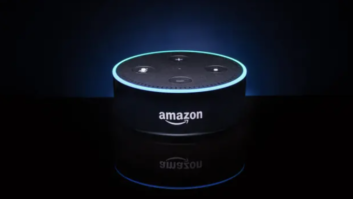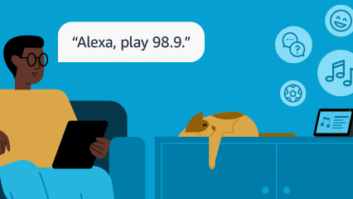When smart speakers burst onto the scene last Christmas they heralded the coming of the voice-activated internet, and many thought, a return of radio to the home environment. A research study prepared for the Music Business Association by the market research firm AudienceNet also seems to suggest a strong link between smart speaker sales and an uptick in listenership to music subscription services such as Spotify, Apple Music and Pandora.

The report was based on a survey of a statistically and demographically representative sample of the U.S. population comprised of 3,000 participants, aged 16+. The results were recently presented in a webinar hosted by AudienceNet and the MBA’s Music Biz.
[Read: Smart Speaker Owners Listen to More Audio (But Not Necessarily Radio)]
According to a separate study from research firm Canalysis, sales of smart speakers have skyrocketed by nearly 200% in the second quarter alone. AudienceNet claims that an estimated 14% of the U.S. population now owns a smart speaker, and listening to music is the dominant use case among owners.
Another interesting finding from AudienceNet is that 43% of smart-speaker owners now use on-demand streaming services, and 37% of owners started paying for these services after purchasing their device. This comes on the heels of a report published by Adobe Systems in September, which said that by 2019, nearly half of American households will own a smart speaker.
According to the AudienceNet survey, AM/FM radio was still the most popular listening source in the U.S. accounting for 31% of total listening time. That’s a drop of 3% since last year’s survey was completed. And, AM/FM radio only accounted for 12% of listening among 16–24 year olds. AudienceNet’s numbers suggest that listenership to radio and CD players is very low among 16–24 year olds, but grows in a linear fashion as participants got older, peaking among those age 65+ at 45%.
Smartphones were the primary listening choice among younger respondents, taking the majority share of listening among all aged 34 and below (45% for ages 16–19, 40% for ages 20–24, and 31% for ages 25–34). The smartphone also proved to be single most used device for music consumption, capturing 25% of total time spent listening — up 6% from the same study last year.












